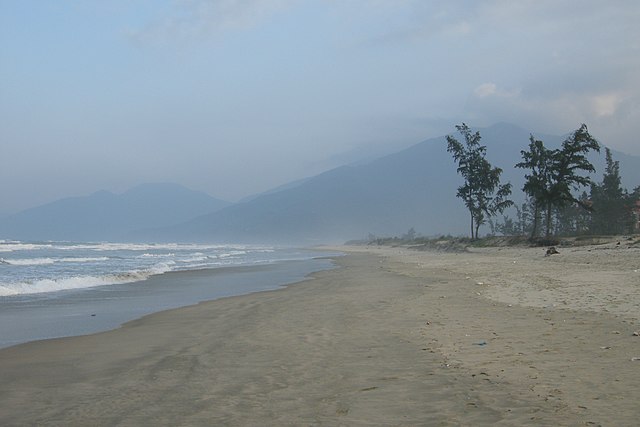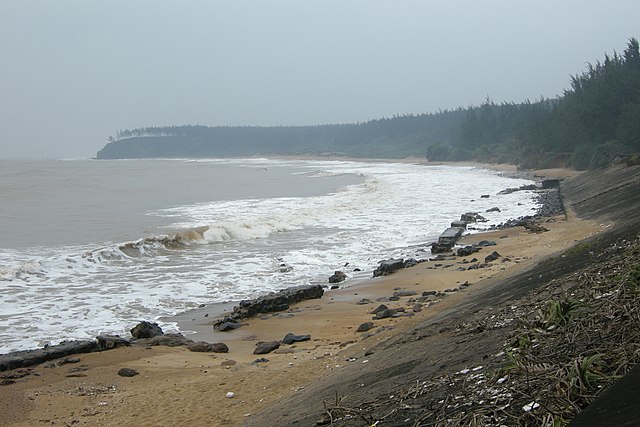
Thammasat University students interested in ASEAN studies, China, ecology, political science, economics, sociology, cultural politics, and related subjects may find it useful to participate in a free 5 October webinar on Dealing with China’s Gray-Zone Strategy in the South China Sea.
The event, on Thursday, 5 October at 9am Bangkok time, is presented by the ISEAS – Yusof Ishak Institute, Singapore.
The TU Library collection includes several books about different aspects of Chinese policies in the South China Sea.
Students are invited to register at this link:
https://us06web.zoom.us/webinar/register/WN_jfPNYSEyRSG9DldmS__jQw#/registration
The event webpage explains:
About the Webinar
China has increasingly employed gray-zone tactics, including deploying its coast guard and maritime militias, to assert its sovereignty and jurisdictional claims in the South China Sea. While staying below the threshold of armed conflict, these gray-zone operations have steadily altered the status quo in China’s favour, bolstering Chinese strategic advantage while eroding the presence and position of other claimant states. Recent developments, including the Philippines’ successful resupply missions to Second Thomas Shoal in the Spratly Islands despite China’s attempts to prevent them, shed light on the growing intensity of gray-zone and counter-gray zone warfare in regional waters. This webinar will explore the unfolding dynamics of China’s gray-zone operations in the South China Sea and offer insights into the strategies and measures adopted by affected claimant states in response to China’s manoeuvers.
About the Speakers
Dr. Collin Koh is Senior Fellow at the Institute of Defence and Strategic Studies of the S. Rajaratnam School of International Studies, based in Nanyang Technological University, Singapore. […]
Dr. Evan A. Laksmana is Senior Fellow for Southeast Asia Military Modernisation at the Asia office of the International Institute for Strategic Studies (IISS) in Singapore. […]
Dr. Nguyen Thi Lan Anh is Director General of the East Sea Institute, the Diplomatic Academy of Vietnam (DAV). She is an expert in international law and the law of the sea. Her research area includes issues related to ocean law and policy, maritime boundary delimitation, maritime security and safety, and Vietnam’s foreign policy with a focus on the South China Sea. […]
Rear Admiral Rommel Jude Ong (Ret) was Vice Commander of the Philippine Navy and is currently Professor of Praxis with the Ateneo School of Government (ASOG) where he is Program Director of the Masters in Public Management (MPM) Twinning Program in collaboration with the Armed Forces of the Philippines. He is also Senior Research Fellow with the Ateneo Policy Center where he is a co-lead investigator in a study on political warfare. […]

On 28 September 2023, the Voice of America (VOA) posted an article by reporter William Yang, indicating:
China’s South China Sea Tactics Push Manila to Become More Assertive
A bold move by the Philippine coast guard this week to publicly cut loose a floating barrier installed by China near a disputed South China Sea lagoon highlights how Beijing’s actions are fueling forceful responses, analysts say. It also could help rally other countries in the region to stand up to Beijing.
“The current [Philippine] government understands the need to foster collective deterrence of denial and punishment with willing partners as an appropriate strategy to impose a red line for China,” said Joshua Espeña, a resident fellow at the International Development and Security Cooperation, a Philippine-based think tank.
China says it floated the 300-meter barrier near the entrance of Scarborough Shoal to keep Philippine fishing vessels away. The fertile fishing area and disputed reef lies within the Philippines’ exclusive economic zone — a 200-mile area off any country’s shore — but has been under effective Chinese control since 2012.
The barriers were installed late last week but by Tuesday, the Philippines announced they had been removed. Shortly after that, the Philippine coast guard released a video on X, formerly known as Twitter, that showed a diver using a knife to cut the floating barriers loose.
Rallying support
It is not the first time the Philippines released video to highlight what experts call China’s gray zone operations in the South China Sea. In August the Philippine coast guard shared footage of a Chinese coast guard ship firing water cannons at a Philippine vessel conducting resupply missions to a World War II-era warship, the Sierra Madre, which Manila intentionally grounded at the Second Thomas Shoal as a military outpost to safeguard its territorial claim.
Gray zone operations refer to the use of military and non-military offensive tactics to intimidate or coerce, and Manila’s decision to publicize China’s actions could help rally support from the Philippine public and international allies, some analysts say.
“In order to push back against China,” Ray Powell, director of SeaLight at the Gordian Knot Center for National Security Innovation at Stanford University, told VOA by phone, Manila “needs their own people behind them and they have to build a base of international support.”
Manila’s efforts to defend its economic zone also include using larger naval vessels for resupply missions around Second Thomas Shoal and conducting regular military exercises or maritime patrols with like-minded countries including the U.S. and Australia. Some observers say these measures will force Beijing to review its coercive tactics against the Philippines.
“There is an obvious uptick in engaging friendly powers to build collective strength,” said Collin Koh, a defense scholar at Singapore’s S. Rajaratnam School of International Studies, in a phone interview. “It seems to have an effect of forcing the Chinese to recalculate and recalibrate their moves going forward.”
Espeña, though, said he believes the rising tension between Beijing and Manila will not stop until one side capitulates.
“I don’t think China is meek enough to set a red line on itself,” he told VOA, adding that he expects Beijing to keep using economic, diplomatic, informational and military tools to deter its Philippine counterparts.
During a daily press briefing Wednesday, a Chinese Foreign Ministry spokesman said Beijing would continue to safeguard its territorial sovereignty and maritime rights and interests over the disputed reef that the Chinese called “Huangyan Dao.”
On the same day, the Guangdong Maritime Safety Administration issued a warning about planned military exercises in parts of the South China Sea scheduled on September 28. In a statement, the administration said the drills would take place in the morning and evening. No details were released about the location of the exercises.
To counter Beijing’s pledge to defend its territorial interests around the disputed reef, the Philippine coast guard urged fishermen to keep operating in the area.
“We’re going to increase patrols in Bajo de Masinloc and other areas where Filipino fishermen are,” Philippine coast guard spokesperson Commodore Jay Tarriela told a local radio station on Wednesday, according to Reuters.
Ripple effect?
As territorial disputes between China and the Philippines are likely to continue, other South China Sea claimant states in the region have also lodged complaints about Beijing’s continuous expansion.
Bloomberg reported on Wednesday that Vietnam’s Foreign Affairs Ministry protested Beijing’s installation of two automatic vessel identification stations in the Paracel Islands, a disputed South China Sea island chain claimed by Vietnam and Taiwan but long occupied by China.
Even though several other Southeast Asian states have territorial disputes with China in the South China Sea, Koh in Singapore said countries such as Malaysia and Indonesia are unwilling to assertively confront China as Manila has been doing.
“They don’t appear keen to rock the boat with China,” he told VOA.
If the Philippines successfully pushes back against China’s gray zone operations, other South China Sea claimant states in Southeast Asia may emulate Manila’s tactics in the future.
“If the Chinese are unsuccessful in trying to shape the Philippines’ behavior, there might be a domino effect in Southeast Asia,” Koh said. “Other Southeast Asian countries could get inspired by what Manila is doing and they may do the same thing against China in the South China Sea. That would become very problematic for Beijing.”

(All images courtesy of Wikimedia Commons)
